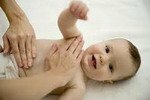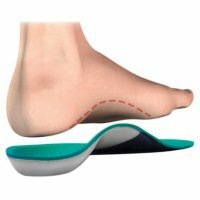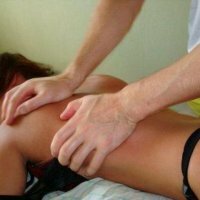Manual therapy for infants

In pediatrics manual therapy for infants, based on the features of anatomy, has its differences, the stages of the child's psychomotor development, manifestations of diseases( clinical), compensatory large possibilities of the child's organism, as well as diagnosis and therapy, based on the age of the baby.
What is manual therapy for
Manual therapy was first used by a man who first helped to give birth to a woman's child on earth. Manual methods of obstetrics are the methods used in manual therapy.
The cause of various diseases of the musculoskeletal system, nervous system and spine in infants may be incorrectly performed or not performed manual therapy during childbirth or after them. Clinical manifestations in infants of these diseases can manifest immediately, or after a while. It is the prevention of complications, as well as the success of the treatment, that will depend on the results of manual diagnosis, compliance with the specialist's indications and contraindications;From properly performed techniques, which are conducted by a specialist who owns manual therapy and has knowledge of related disciplines( roentgenology, pediatric neurology, orthopedics).
How manual therapy is performed for infants
Manual diagnosis of infants should begin with the collection of anamnestic data, and after the examination of the child. Special attention is paid to the analysis of the obstetric anamnesis( this is the course of pregnancy, the passage of labor, the state of the fetus and the newborn).This is done in order to identify the most frequent risk factors that contribute to the development of perinatal pathology, fetal injury, and newborn. The doctor, first of all, should investigate some factors: what kind of woman's pregnancy, childbirth( if the child was before, then what they ended).How the present pregnancy proceeded - whether there should be a place: a toxicosis, traumas, infections, threat of interruption of pregnancy when the fetal movement began, its activity. Also, whether the cesarean section was shown, whether the pregnant woman was lying on the preservation, what treatment was performed.
It is also necessary for a specialist to collect information about the course of labor: independent, rapid, prolonged, urgent or not, when amniotic fluid has passed, the presentation of the baby( head, leg, pelvic, gluteal).It is also necessary to find out whether there were: the threat of fetal asphyxia, the weakness of labor. Stimulation of labor - the use of obstetric manual manipulation( traction for the head, pelvis, leg, handle, lateral inclinations, rotation in the thoracic, cervical and lumbar spine) or drug manipulation. Whether the obstetrical forceps were used, whether there were any gaps in the perineum. Also, a specialist needs to know the mass of the baby at birth, whether he immediately screamed whether he had an umbilical cord, an Apgar score, whether reanimation measures were used, or how symptoms of respiratory failure were expressed. Also, when the baby first took the mother's breast, his activity at the same time.
Data show that the greatest number of risk factors is at the time of delivery. This is especially true for childbirth not in time, inconsistency with the mother's birthmarks of the size of the fetus, the type of presentation, the large mass of the fetus. Also, the manipulative gross methods of obstetricians are significant, because of this, often there is weakness in labor activity, as well as the threat of fetal asphyxia. This forces the specialists to resort to surgical interventions or to force the period of labor.
Newborns often have nervous system damage. Often there is a combination of craniospinal injuries, which cause ischemic, discirculatory and hemorrhagic manifestations. Generic injuries contribute to a large number of anomalies in the development of the infant locomotor system and anomalies in the development of the nervous system.
When identifying the most significant risk factors for the future mother and fetus, experts outline the main directions for the prevention of birth trauma in the pregnant, fetus and newborns. Also midwives should conduct them during the antenatal period, the birth and post-natal periods, teach women the methods of post-isometric relaxation and mobilization during childbirth, and master the technique and methodology of manual therapy. Undoubtedly, every pregnant woman and baby are examined must be a manual therapist.



